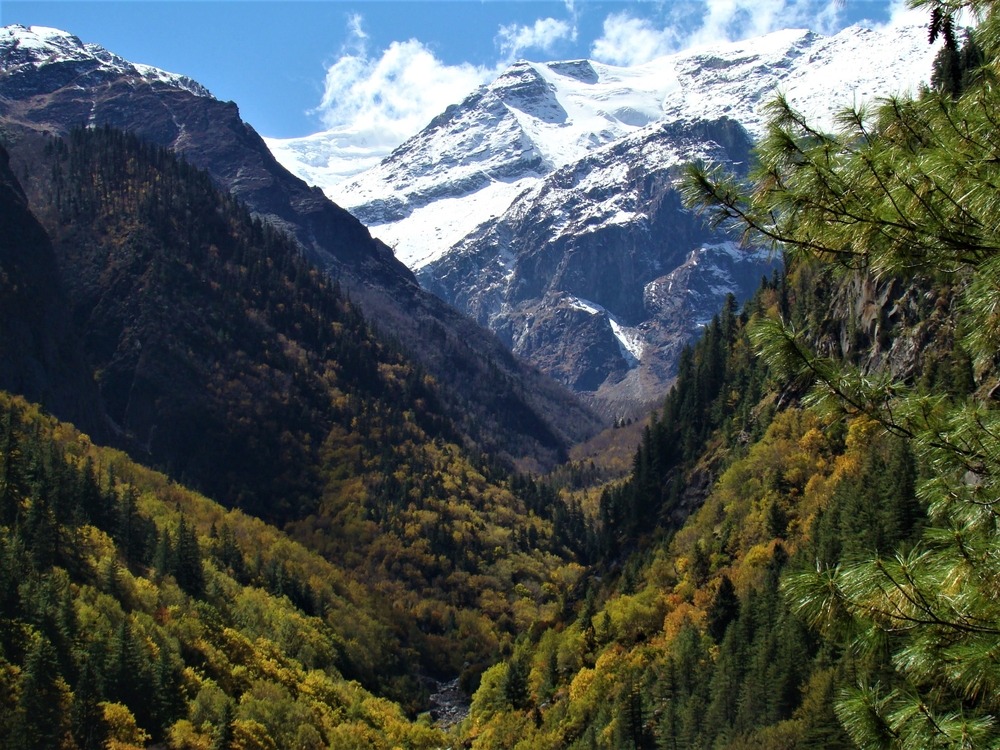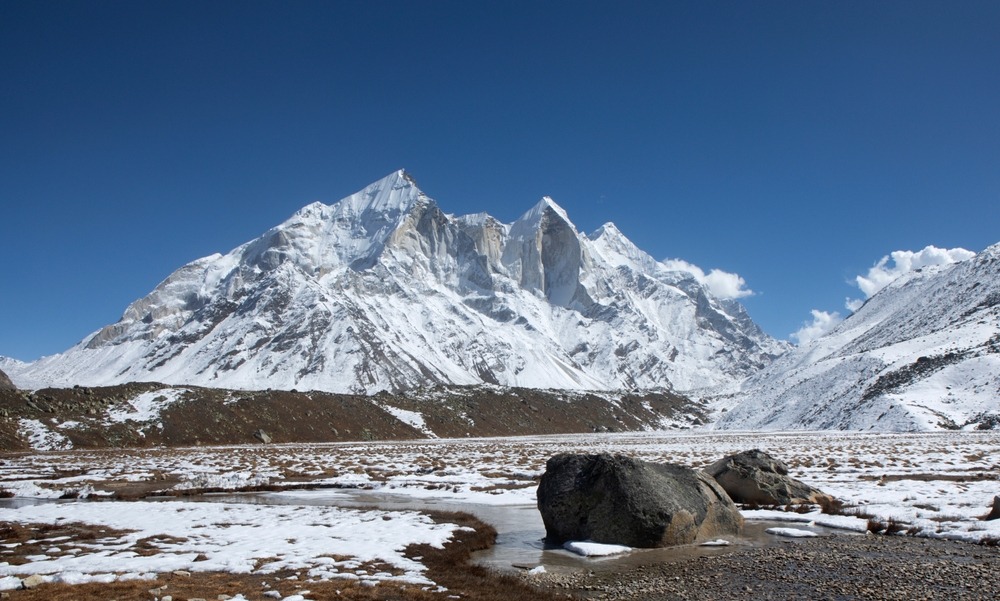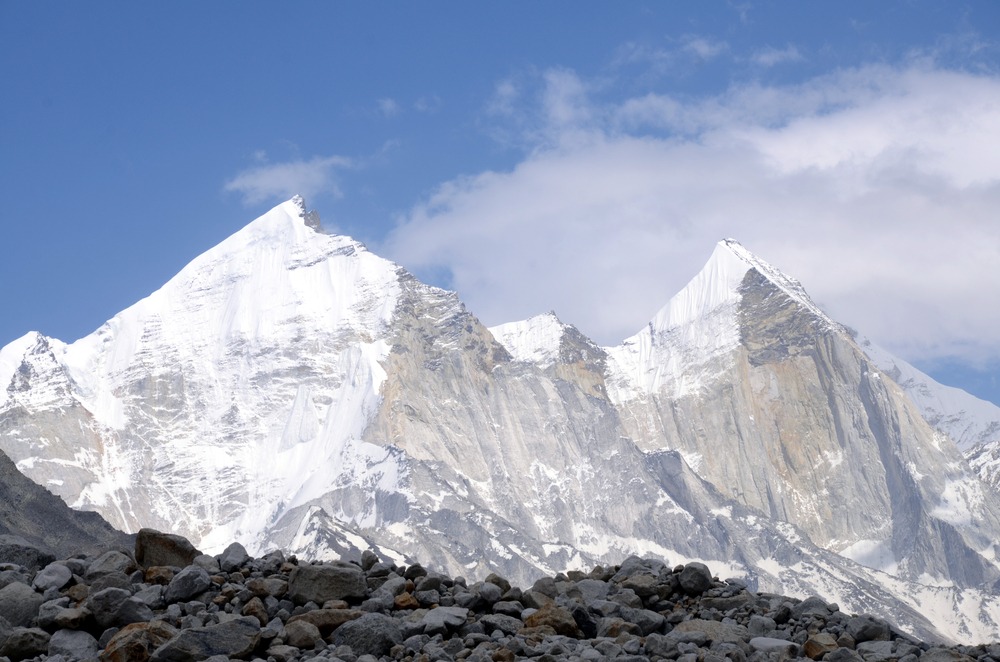Are you prepared for a once-in-a-lifetime experience? Trekking to the Gaumukh Glacier, the source of the mighty Ganges, is a dream come true for many. The towering mountains, crisp air, and serene landscapes of Uttarakhand in India offer an experience like no other. But before you pack your bags and head to the Himalayas, there are some essential questions you should ask to make sure your trek is safe, comfortable, and truly unforgettable.
I’ve been on my fair share of treks, and one thing I’ve learned is that preparation is key. That’s why, if you’re thinking of booking a guided trek to Gaumukh Glacier, you’ll want to ask the right questions. Here are 10 must-ask questions to make sure you’re fully prepared for your journey.
1. What’s the Difficulty Level of the Gaumukh Glacier Trek?
Before I started planning my trek, I wanted to know how tough it would be. The last thing I wanted was to overestimate my fitness or sign up for something too challenging. So, understanding the difficulty level is one of the most important things to ask about.
Is It Physically Demanding?
The Gaumukh trek is not an easy one. While it’s not as intense as some of the highest Himalayan treks, it’s still moderate to challenging. You’ll be walking for hours each day, often with steep ascents, rocky paths, and sections where you’ll be crossing rivers or walking through snow. If you’re not used to trekking or hiking, it’s best to spend a few months preparing physically. I recommend running, hiking uphill, and doing some strength training to make sure your body is ready.
Altitude Considerations
Another thing to consider is the altitude. The trek reaches over 4,000 meters (13,000 feet), so altitude sickness is a real concern. Be sure to ask about the acclimatization plan, and how many rest days are factored in. This is essential for avoiding headaches, dizziness, and nausea as you trek higher into the mountains.
2. How Long Does the Gaumukh Glacier Trek Take?

When I first booked my trek, I was a little unclear on how long it would take, and that’s something you should definitely clarify. The Gaumukh Glacier trek usually lasts about 7-8 days, but depending on your pace and acclimatization, it might be longer or shorter.
Daily Distance and Rest Days
Each day involves several hours of trekking, and the distances can vary, but generally, you’ll be covering 6-10 kilometers a day. The guide should break down how much distance you’ll be covering each day so you can mentally prepare.
Some days will be longer than others, especially on the final ascent to Gaumukh Glacier. But don’t forget to ask about rest days. Acclimatization days are super important if you want to avoid altitude sickness, and sometimes, plans change due to weather or trail conditions. You don’t want to find yourself too exhausted by the end of the trek, so understanding the itinerary fully helps you pace yourself.
3. What’s Included in the Gaumukh Glacier Trek Package?
Okay, this one is crucial! I can’t tell you how many times I’ve been surprised by hidden costs or overlooked little details. So, make sure to ask what’s included in the trek package.
Accommodation & Meals
You’ll be staying in tents for most of the trek. In some cases, there are basic guesthouses along the route. The tour operator should provide a list of accommodations, so you know exactly what to expect. As for meals, most agencies provide basic vegetarian meals. It’s always a good idea to check if they cater to special dietary requirements like vegan or gluten-free options.
Guides and Support Staff
This is also where I like to ask about the quality of the guide. Are they certified, and how experienced are they in trekking at high altitudes? A good guide is worth their weight in gold, especially on a trek like Gaumukh, where the terrain can be tricky, and safety is paramount.
Also, inquire about porters or cooks. If you’re carrying heavy gear, it’s helpful to have someone else help lighten the load. Find out if this service is part of the bundle or if it costs extra. If you’re looking for a reliable and well-organized company to guide you on the Gaumukh Glacier trek, I highly recommend The . Their experienced guides and well-planned itineraries make the trek safe and enjoyable. They’ll take care of everything—from permits to gear—so you can focus on soaking in the breathtaking Himalayan scenery.
4. What’s the Group Size Like?
If you’re someone who enjoys solitude, this is one question you don’t want to overlook. Group sizes on treks can vary significantly, and it’s important to know how many people will be joining you.
Small or Large Group?
For me, a small group (around 6-8 people) was ideal. It gives you more personalized attention from the guide, and you get to know everyone better. If the group is too large, there might be less interaction, and things like waiting for others can slow you down.
On the other hand, large groups can sometimes be more affordable, so weigh what’s more important to you—an intimate experience or a more cost-effective option.
5. What’s the Best Time of Year to Book the Gaumukh Glacier Trek?

Timing is everything. If you’ve ever been caught in a trek during monsoon season or winter, you’ll know why this question is vital. Your voyage could be made or broken by the weather.
Best Months for a Gaumukh Glacier Trek
The best seasons to hike to Gaumukh, in my experience, are either summer (May to June) or fall (September to October). The weather is comparatively consistent and the temperatures are tolerable during these months. You’ll also be able to enjoy the clear skies and stunning views of the mountains.
- Summer (May – June): The weather is warm and dry, but not too hot. This is the peak season, so expect more trekkers on the trail.
- Autumn (September – October): The weather remains pleasant, and the post-monsoon landscape is lush and green. Fewer trekkers means quieter trails.
Steer clear of the monsoon season (June to August), when the trail may become hazardous due to heavy rains. Similarly, winter (November to February) is too cold for most trekkers, and parts of the trail may be closed due to snow. If you’re planning the incredible Gaumukh Glacier trek, I highly recommend booking with The Searching Souls. Their experienced team of guides ensures a safe and well-organized journey, allowing you to fully immerse yourself in the stunning landscapes of the Himalayas without any stress.
6. Are There Any Health or Medical Risks I Should Be Aware Of?
This one’s a biggie. Trekking to Gaumukh Glacier requires some serious physical effort, and the altitude can cause health issues if you’re not careful.
Altitude Sickness
Altitude sickness is the main concern on this trek. It can hit anyone, regardless of fitness level, once you start reaching higher altitudes. Ask the operator about their plan for acclimatization—how do they ensure you don’t fall ill? I suggest bringing along Diamox or other altitude sickness medications just in case, and always listen to your guide’s advice on when to take rest breaks.
Medical Support
Also, check the emergency evacuation plans. What happens if you need to be airlifted due to an injury or illness? Make sure there’s a protocol in place to ensure your safety in case of an emergency.
7. What Equipment Should I Bring? Is Gear Rental Available?
Having the right gear can make your trek way more comfortable—and even safer. Before you go, ask for a packing list from the tour operator.
What’s a Must-Have?
You’ll need sturdy boots, warm clothes, a good-quality sleeping bag, and a waterproof jacket. Don’t forget to pack your personal medications, sunscreen, and a camera for those jaw-dropping views.
If you don’t have all the gear or don’t want to invest in it just yet, ask if there are options for renting gear like sleeping bags, trekking poles, or even boots. Some agencies offer rental services, but make sure the equipment is in good condition.
8. What Happens If the Weather is Bad?
I remember one trek where bad weather forced us to alter our entire plan, and it wasn’t fun. That’s why asking about contingency plans is a smart move.
Contingency Plans
If the weather turns for the worse—say, heavy rains or snow—what will happen? Will the operator delay your trek or change the route? It’s good to ask how flexible the operator is in case conditions prevent you from sticking to the planned schedule.
Make sure the guide is experienced enough to navigate the weather challenges and take precautions like setting up shelters in case of storms.
9. Do You Need Any Special Permits or Permissions?
Before embarking on a trek like Gaumukh Glacier, it’s essential to understand any legal requirements or permits necessary to access the region. Trekking in certain areas of India, particularly in protected or sacred zones like Gaumukh, requires special permissions.
Required Permits
For Gaumukh Glacier, you’ll need permits like the Forest Permit to trek through the forest areas and the Nanda Devi Biosphere Reserve permit, which covers the high-altitude zones surrounding the glacier. It’s important to clarify whether your trekking agency handles all these permits for you or if you’re responsible for acquiring them yourself. Some agencies include these in the price of the trek, while others may charge separately.
Another important permit could be related to religious sites along the trek. Gaumukh is considered a sacred site in Hinduism, and if you’re visiting temples or other religious landmarks on your way to the glacier, there may be additional permissions required.
It’s always wise to double-check and ask the operator whether these permits are included or if you need to apply for them separately to avoid last-minute surprises.
10. What is the Total Cost, and Are There Any Hidden Charges?
The cost of the trek is often a deciding factor when booking, but it’s also the area where many people get caught off guard. Trekking in the Himalayas is an incredible experience, but it’s essential to understand what you’re paying for. You don’t want to end up with unexpected charges during the trek, as these could strain your budget or take away from your enjoyment.
Cost Breakdown
Before making a reservation, request a thorough cost breakdown from the operator. Does the cost cover transportation to and from the beginning site of the trek? Are the meals, accommodation, permits, and guides included? Typically, agencies will offer an all-inclusive price, but it’s always good to clarify this in advance. Some agencies charge extra for emergency evacuation, tips for guides and porters, or other services like Wi-Fi or phone charging.
Hidden Charges
One thing I learned is that seemingly small costs can add up quickly. Ask if there are any additional charges for things like equipment rental, extra meals, or tips. Being prepared for these costs is always better. Some agencies might even charge for specific activities like a cultural program or additional rest days.
Be aware of these potential extra costs, and make sure everything is clear before you sign up for the trek. The last thing you want is to find out that you owe more money once the trek has started.
Conclusion
Booking a guided trek to Gaumukh Glacier is an experience of a lifetime, but the key to ensuring it’s a safe, enjoyable, and stress-free journey is asking the right questions before you go. By clarifying the difficulty level, knowing what’s included, asking about permits, and understanding the total cost, you’ll be well-prepared for the challenges and rewards that lie ahead.
The Gaumukh Glacier trek is a unique adventure that brings together natural beauty, physical challenge, and spiritual significance. As you trek through the forests and rocky paths, you’ll be following the same route that pilgrims and adventurers have taken for centuries. So, take your time, ask your guide the right questions, and get ready for a truly unforgettable experience in the heart of the Himalayas.
FAQs
1. What fitness level do I need to have for the Gaumukh Glacier trek?
The Gaumukh trek is considered moderate to challenging. It requires good physical fitness, especially if you’re not accustomed to high-altitude trekking. Preparation through hiking or cardio exercises is recommended.
2. Can I trek to Gaumukh Glacier during the monsoon season?
It’s not recommended to trek to Gaumukh during the monsoon (June to August) due to heavy rainfall, slippery trails, and an increased risk of landslides. The best time to trek is between May to June and September to October.
3. Is it feasible to hike alone to Gaumukh Glacier?
While it’s possible to trek independently, it’s safer and more advisable to join a guided trek, especially for beginners. A professional guide can help navigate the terrain, manage risks associated with high-altitude trekking, and ensure your safety.
4. What do I need to bring with me on the Gaumukh trek?
You’ll need appropriate clothing (layers for warmth), sturdy hiking boots, a sleeping bag, trekking poles, and essential items like sunscreen, medications, and water bottles. Check with your trekking agency for a full gear list.
5. How much does a guided trek to Gaumukh Glacier cost?
A guided trek to Gaumukh can cost between INR 15,000 to INR 25,000, depending on the operator, services included, and the size of the group. Higher-end tours may cost more, especially if they offer luxury accommodations or additional services.
Category:

Leave a Reply